See our peer-reviewed journal paper here
Background
Various football programs have incorporated the use of helmet shell add-ons, which add padding to the exterior of a helmet shell. However, the overall impact of these add-ons on helmet performance is not fully known. To gain insight into this issue, we employed our established varsity football helmet testing procedure to evaluate the effect of several helmet shell add-ons currently being used. We tested the Guardian Cap XT, the Guardian Cap NXT (which is the NFL version), and the SAFR Helmet Cover.
Testing Procedure
We used two types of helmets for our testing: the Riddell SpeedFlex and the Schutt F7 VTD. We initially tested each helmet in a control condition without any add-ons. Following that, we applied our varsity football helmet testing protocol to each helmet, testing them with the Guardian Cap XT, the Guardian Cap NXT, and the SAFR helmet cover. Our aim was to quantify any reductions in linear and rotational acceleration, concussion risk, and the impact these factors had on our overall STAR score.
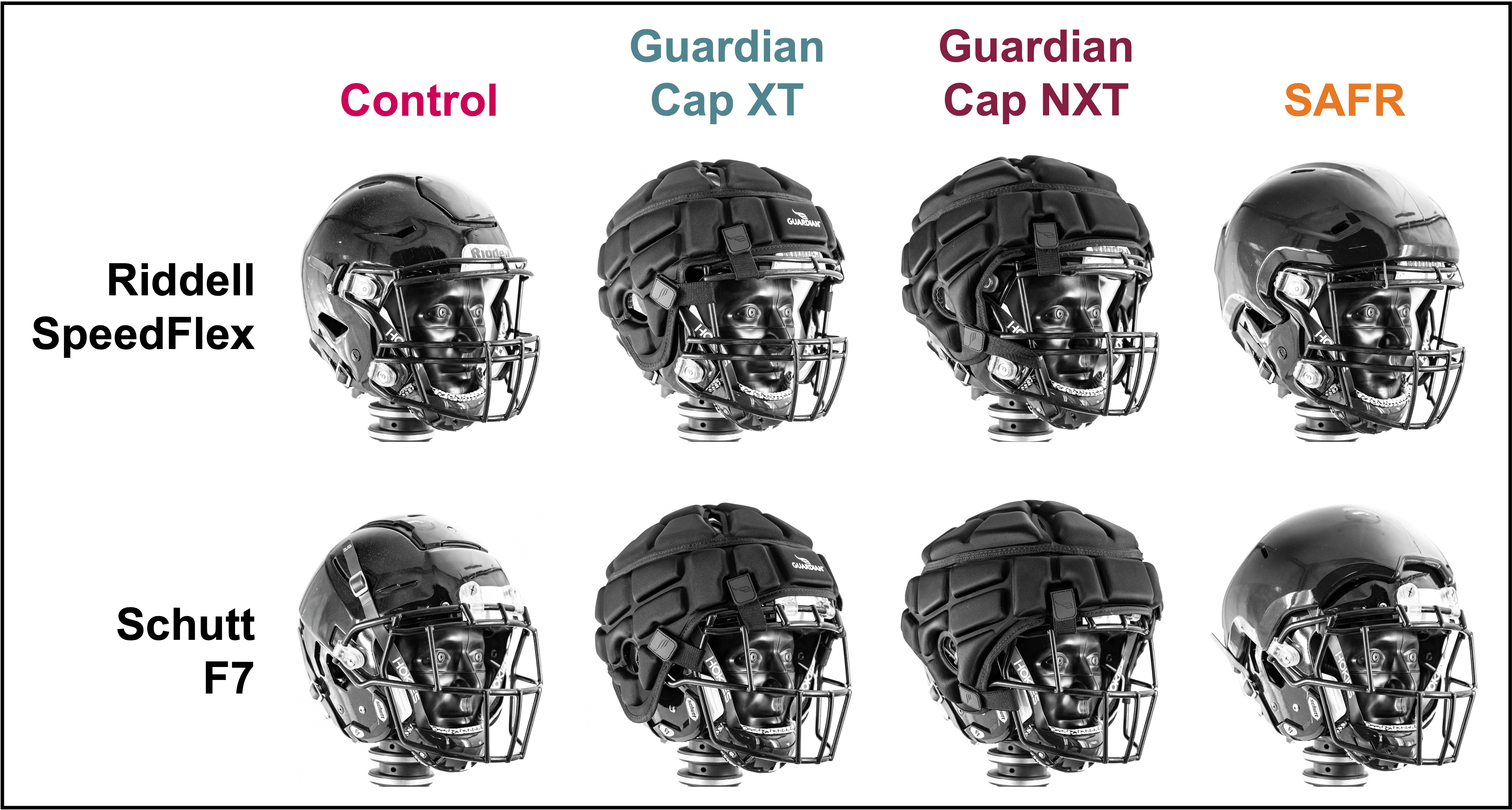
Our varsity football helmet testing protocol includes four impact locations: the front, front boss, side, and back. Each location is tested at three different impact speeds, set at 3.1 m/s, 4.9 m/s, and 6.4 m/s. Each test configuration is repeated twice.
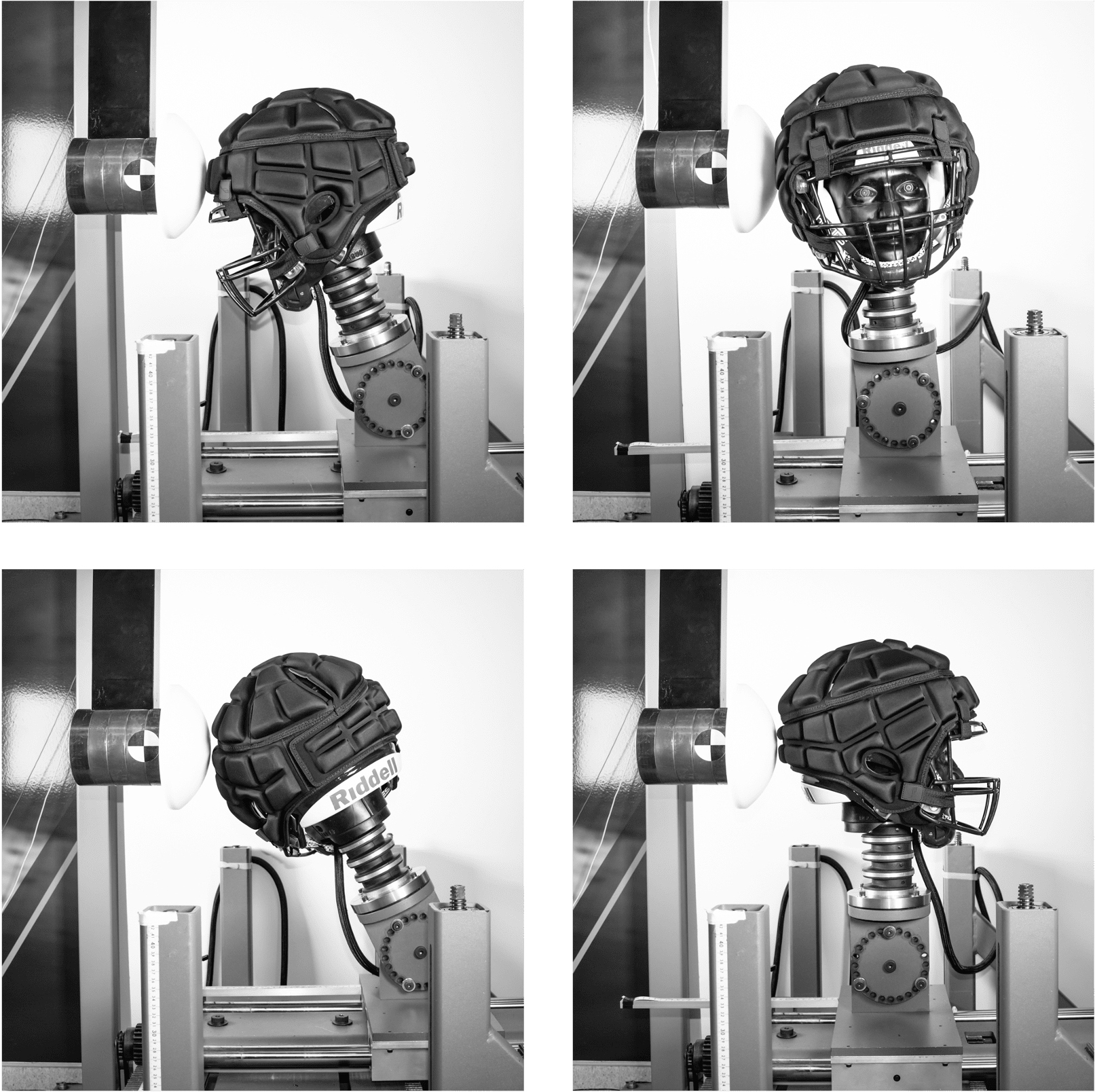
We tested each helmet add-on using our rigid pendulum impactor face, following the same procedure we use in our standard varsity football helmet testing. This yielded 192 impact tests. Additionally, we conducted an extra series of tests where the impactor face was covered with the same add-on as the helmet being tested. This allowed us to evaluate what happens during a helmet-to-helmet impact when both players wear a helmet shell add-on. This added another 144 tests, bringing the total number of tests to 336.
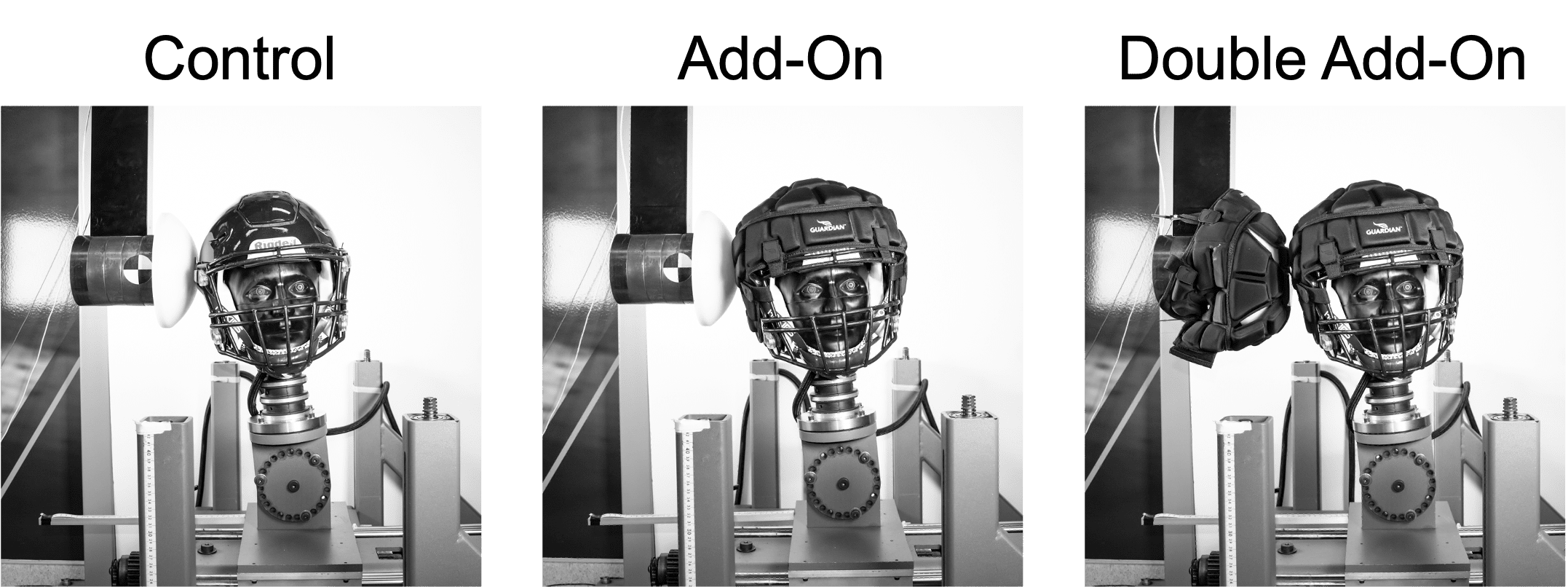
Test Results
Helmet Shell with Add-On
The addition of helmet shell add-ons led to average reductions in linear accelerations between 3 and 8% compared to helmets without add-ons. They also reduced rotational accelerations on average by 5 to 14%. These reductions resulted in average decreases in concussion risk ranging between 15 and 34%.
| Add-On | Linear Accel. | Rotational Accel. | Concussion Risk |
|---|---|---|---|
| Guardian XT | 3% | 5% | 15% |
| SAFR | 4% | 9% | 25% |
| Guardian NXT | 8% | 14% | 34% |
In terms of the STAR score, when a helmet was equipped with an add-on, there was a decrease observed. However, this effect varied by helmet model. For the Riddell SpeedFlex, the Guardian Cap XT, SAFR Helmet Cover, and Guardian Cap NXT resulted in STAR score reductions of 48%, 62%, and 72%, respectively. For the Schutt F7 VTD, these add-ons resulted in STAR score reductions of 8%, 15%, and 27%, respectively. Lower values indicate better performance.
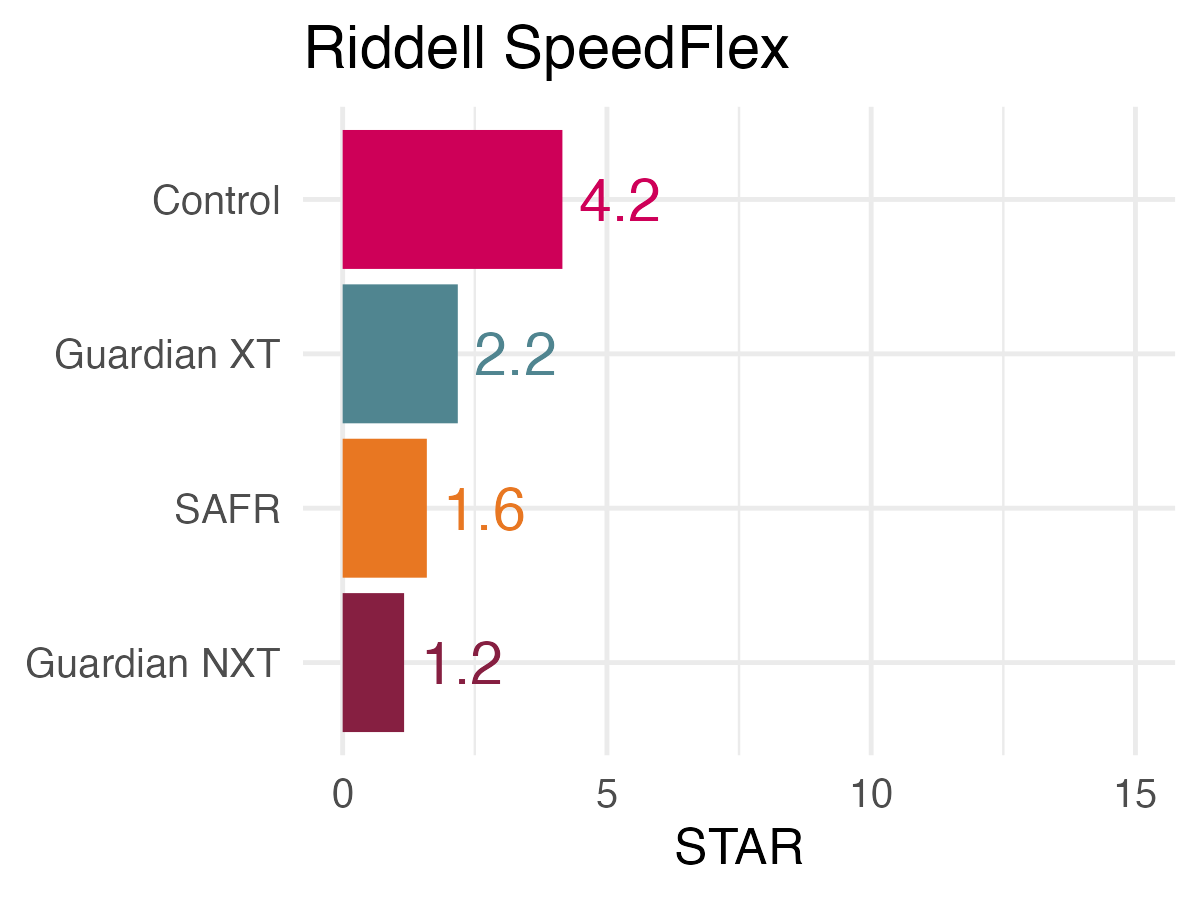
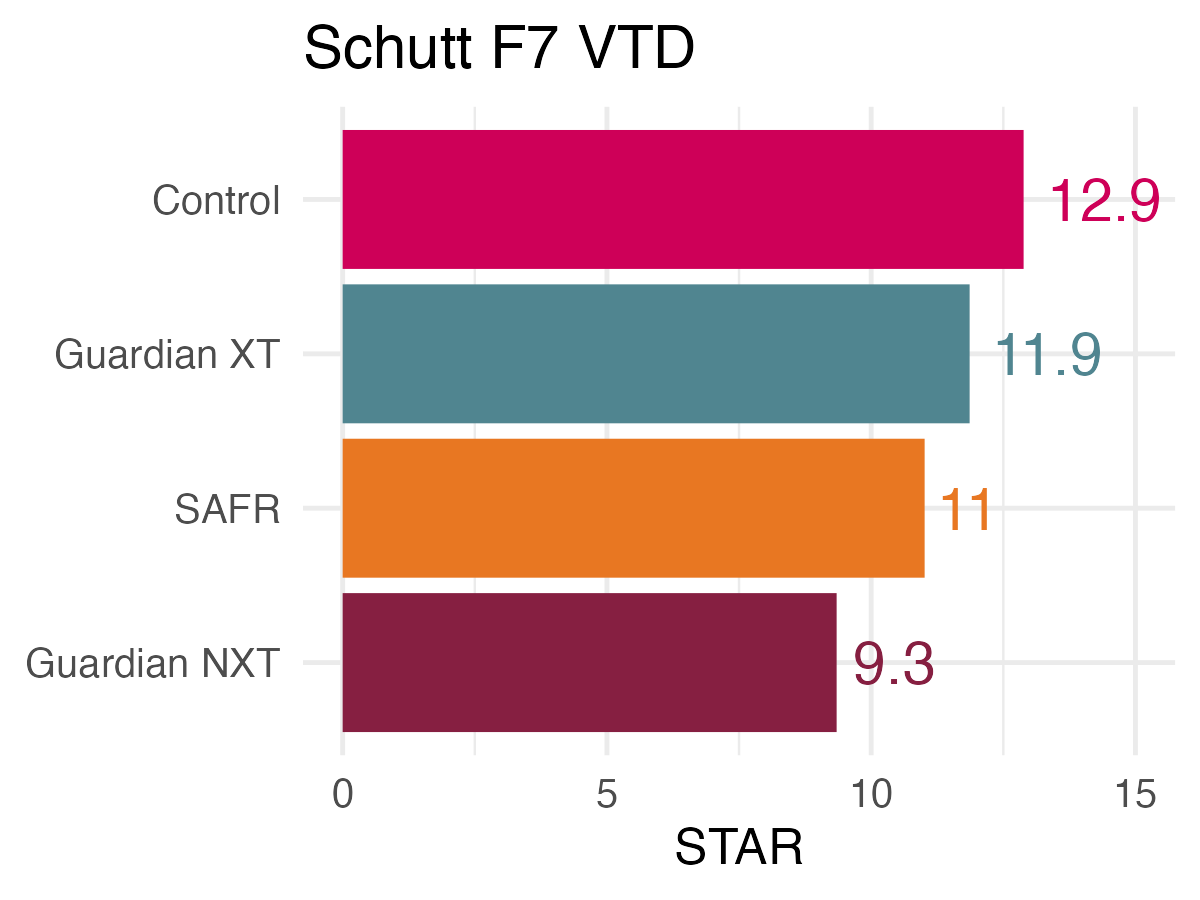
Impactor and Helmet Shell with Add-on
When both the impactor and the helmet shell were equipped with add-ons, reductions in linear and rotational accelerations were greater. Linear acceleration was reduced on average by 6 to 17%, while rotational acceleration was reduced by 5 to 25%. These reductions resulted in average concussion risk reductions ranging between 22 and 64%.
| Add-On | Linear Accel. | Rotational Accel. | Concussion Risk |
|---|---|---|---|
| Guardian XT | 6% | 2% | 22% |
| SAFR | 12% | 9% | 52% |
| Guardian NXT | 17% | 12% | 63% |
STAR score reductions were also greater when both the impactor face and the helmet shell were equipped with add-ons. For the Riddell SpeedFlex, the Guardian Cap XT, SAFR Helmet Cover, and Guardian Cap NXT led to STAR score reductions of 40%, 69%, and 80%, respectively. For the Schutt F7 VTD, these add-ons resulted in STAR score reductions of 12%, 55%, and 66%, respectively. Lower values indicate better performance.
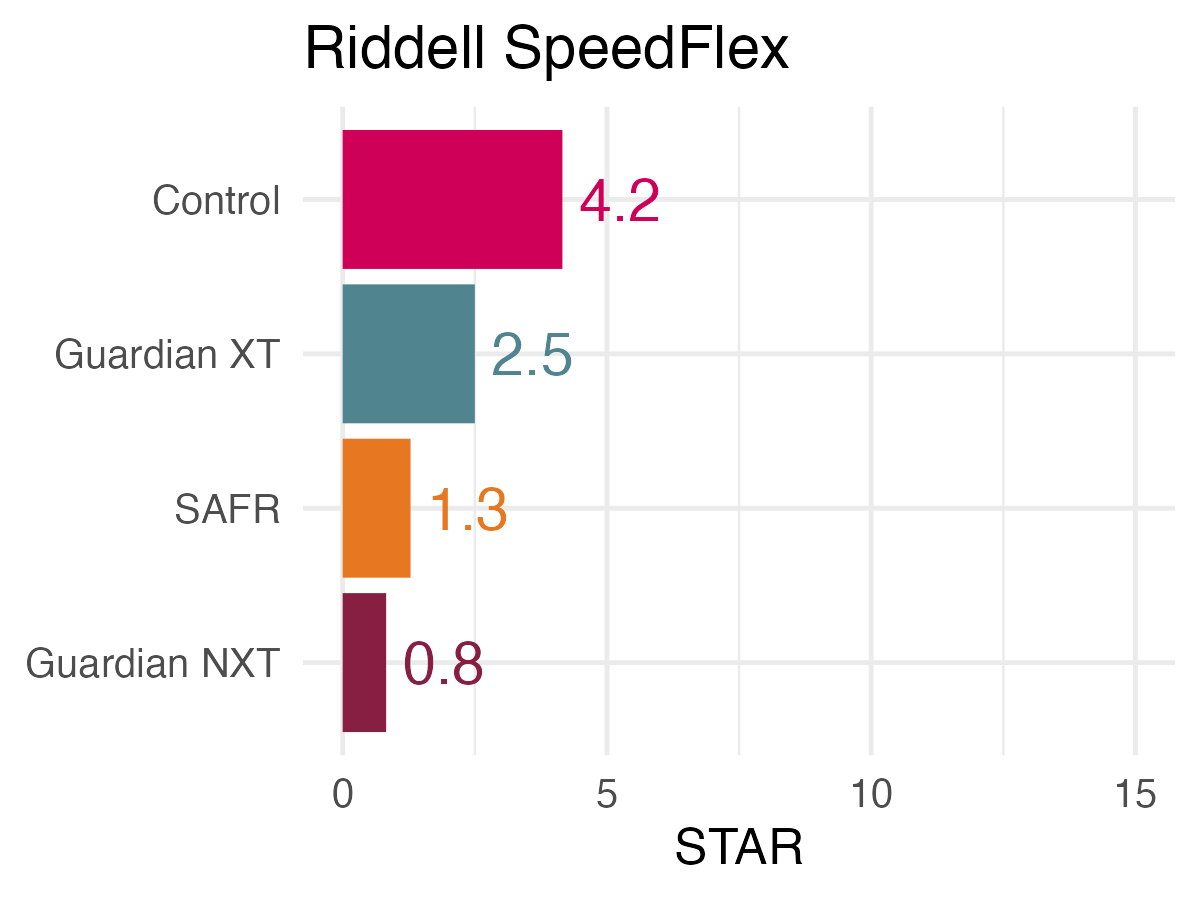
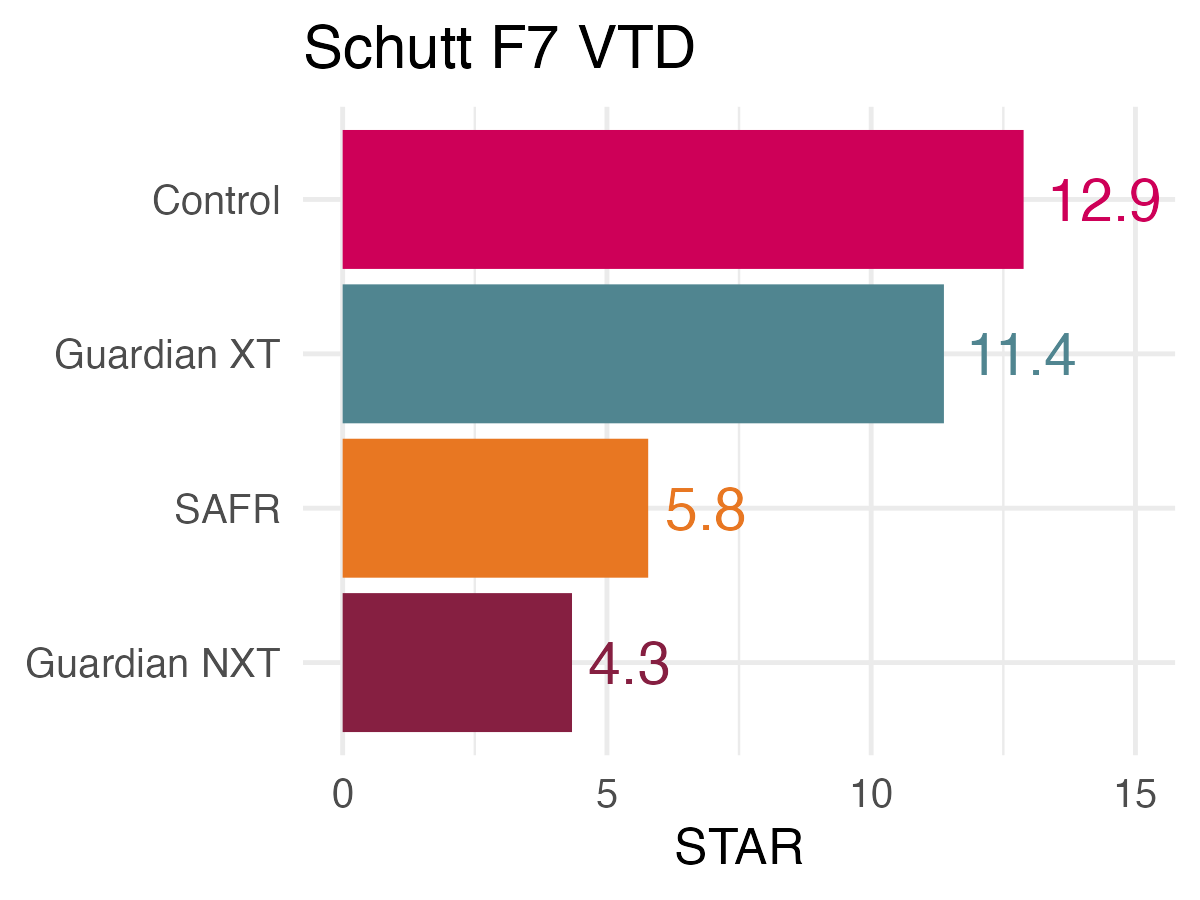
Summary
Helmet shell add-ons have been shown to decrease linear and rotational acceleration, thereby helping to reduce risk. However, there are notable differences between various add-ons, so the specific model used is important to consider. Moreover, the effectiveness of these add-ons can vary significantly depending on the helmet model. The helmet model itself is crucial as it sets the baseline level of protection. While helmet shell add-ons can enhance a helmet's performance, it's important to note that a poor-performing helmet with an add-on may not perform as well as a high-performing helmet without an add-on.
This test series and analysis were designed to shed light on the efficacy of helmet shell add-ons. Nevertheless, the study has limitations. We only explored the effect of helmet shell add-ons on two helmet models and did not examine their effect on all the helmets included in our varsity football helmet ratings. Moreover, we did not investigate the effect of these add-ons on youth football helmets.
It's also important to note that the reductions in accelerations and star scores are specific to the impact conditions used in our tests. As not everyone experiences these same impacts, individual risk will vary from the averages presented here. It must be stressed that regardless of the helmet or add-on used, any player can still sustain a concussion. Our results represent average risks across the football player population for a given head impact exposure and should not be interpreted as absolute risk measurements for individual players.